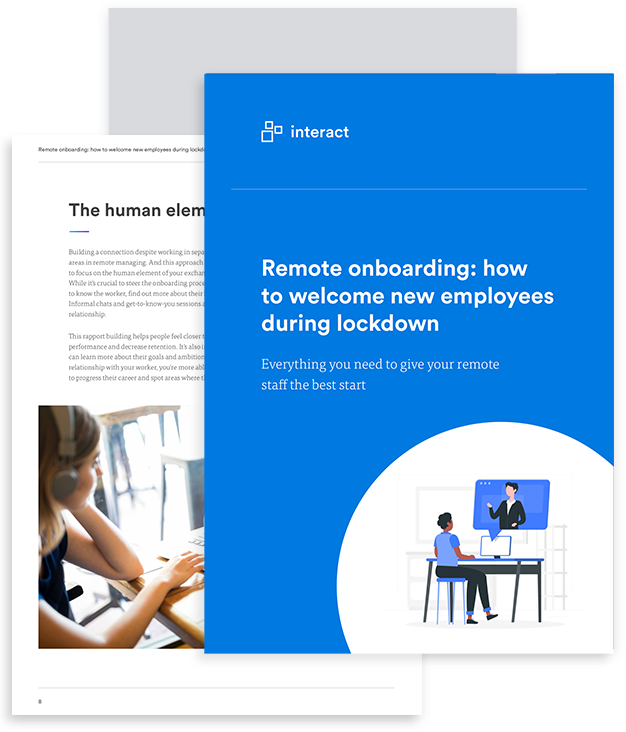As any of us who’ve joined a new business will know first-hand, the process of onboarding can make – or break – those crucial first few days, weeks, and months.
With many employees making the decision to stay with a company long-term within the first 6 months, and employee turnover costs and impact high on the management agenda, it’s an area seeing increasing investment.
At the same time, the benefits of remote working – including flexible working opportunities and reduced stress from commuting for employees, cost savings, increased productivity, and globalization opportunities for employers – have seen organizations re-designing and re-shaping themselves, adjusting for this new style of working.
Onboarding new staff remotely
However, when it comes to delivering effective and tailored onboarding practices for our remote workers, we’re still behind the curve.
This is a demographic of employees with unique challenges, needs, and requirements. Simply replicating the traditional steps of in-office onboarding with ‘adjustments’ for that lack of physical contact won’t work. It’s time for a new approach to onboarding remote employees.
Onboarding checklist for remote employees
Each organization is unique in its practices, culture, and requirements of new employees, so an effective onboarding checklist will need tailoring to your organization. This onboarding checklist template is easy for you to adapt to your own needs, while our blog below explores the unique needs of workers based outside your office space.
Got an existing onboarding program? Given the unique challenges facing remote employees, it’s best to approach the process as a ‘re-design’ rather than a ‘re-purposing’, if you have an existing checklist for in-house employees. While some steps overlap, there are some extra things to consider.
Just looking for the remote worker onboarding checklist template? You can download it here.
Step #1: Before the employment offer

The process of onboarding actually begins with the recruitment process, particularly when it comes to remote workers.
Remote workers – and employers – often face challenges around accountability and management of workload. Reports show employers struggle with visibility of what their remote workers are doing, and remote employees are more likely to overwork as a result. It pays to be transparent about this process from the get-go.
Set out clear expectations of the role, hours of work, any perimeters around routine and how you would expect to be updated or monitor output. Ensure interviewees are aware what objectives would be set and the protocols for reporting against those. This ensures there is no conflict or misinterpretation once they start.
If your remote employee is not interviewing in-house, their visibility of your employer brand and corporate culture will be limited to what they see online, and their experiences during the recruitment process.
Today’s employees increasingly seek a sense of purpose from work, and employer brand can be a huge differentiator when looking to attract top talent to your organization. Take time to update careers information and set out clear communications and feedback when interviewing.

By being clear about who you are, you’re also more likely to attract candidates who align with your company culture – increasing the chance of a good fit, and retention rates.
Checkpoints for the recruitment stage:
- Update role description and responsibilities
- Careers information
- Interviewee given details about role expectations and accountability
Onboarding new staff remotely
Step #2: On acceptance of an offer
Regardless of where employees are based, there is always some paperwork.
While standard onboarding practices are typically the same for remote workers, sending out paper-based documents causes additional – and often, unnecessary – headaches. For this reason, consider using a certified virtual signing system, such as DocuSign, which is legally binding.
If your workers are based internationally, there may be different documents required for proof of eligibility to work, alongside differences in tax or payroll. Take the time to consult with employment or legal experts from each territory, to ensure you’re compliant and have all the necessary paperwork to be completed.
Checkpoints for the offer stage:
- Verbal offer
- Formal written offering
- Agreed starting date
- Issue job contract, with copies for employer and employee
- Send a copy of full job description and role responsibilities
- Request for new starter information:
- Contact information
- Social security
- Payroll details
- Tax and Eligibility to Work forms (e.g., W-4 and/or I-9 forms)
- Reference requests
- Request acceptable forms of ID
- Business / role specific agreements: [examples]
- Confidentiality Agreement
- Non-disclosure Agreement
There may be additional documentation surrounding registrations and laws specific to your business – see the IRS website in the US for more information.
Step #3 Before the first day: pre-boarding
You’re looking to get buy-in, engagement and motivation from your new employee from the outset. Don’t wait until their first day; take this opportunity to begin introducing them to your business and its culture, as well as performing vital admin tasks to ensure those first few days go as smoothly as possible.
Pre-boarding is rising in popularity, particularly as statistics report that 33 percent of employees knew whether they would stay with their company long-term after their first week. Pre-boarding can also boost speed, confidence, and competence, helping your staff to get ahead.
Send a welcome to the office email to your new starter a week or two before commencing their role. In this, you should:
Set out the itinerary for the first few days, weeks, or months – depending on your onboarding program. This gives the employee some mental preparation for what to expect once commencing employment.
Provide details for a point of contact in HR or management, in case the new starter has any initial questions.
Send your business handbook or provide early access to your employee intranet, or particular areas of it, to give insight into your business culture, vision, and values.
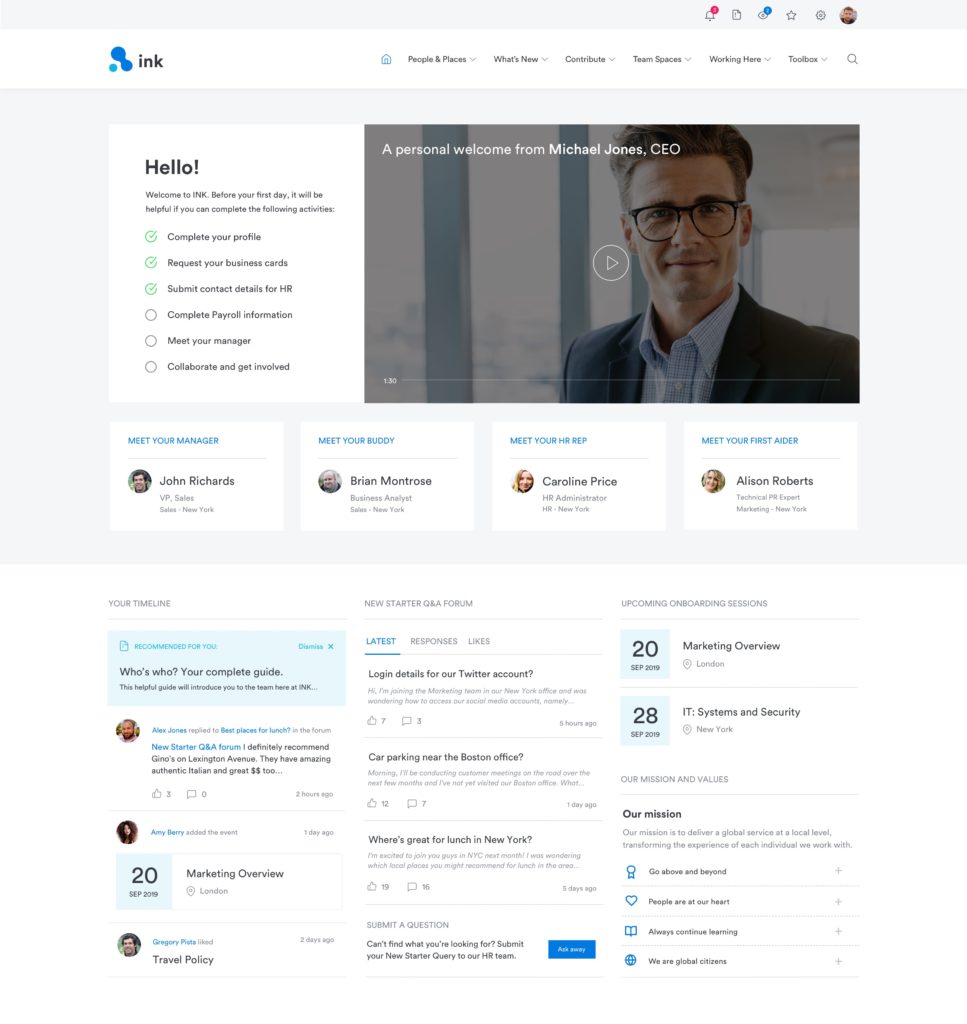
Provide access to FAQs to answer common queries around who to contact, when employees will receive their equipment, common benefits and so forth.
If you have intranet software with preboarding functionality, alleviate some of the necessary – but time-consuming – paperwork ahead of time using workflows and forms. Mandatory Reads can be used for important compliance or regulatory documentation. Getting these tasks completed ahead of time frees up the first few days to immerse your new starter in the more ‘hands-on’ aspects of their new role.
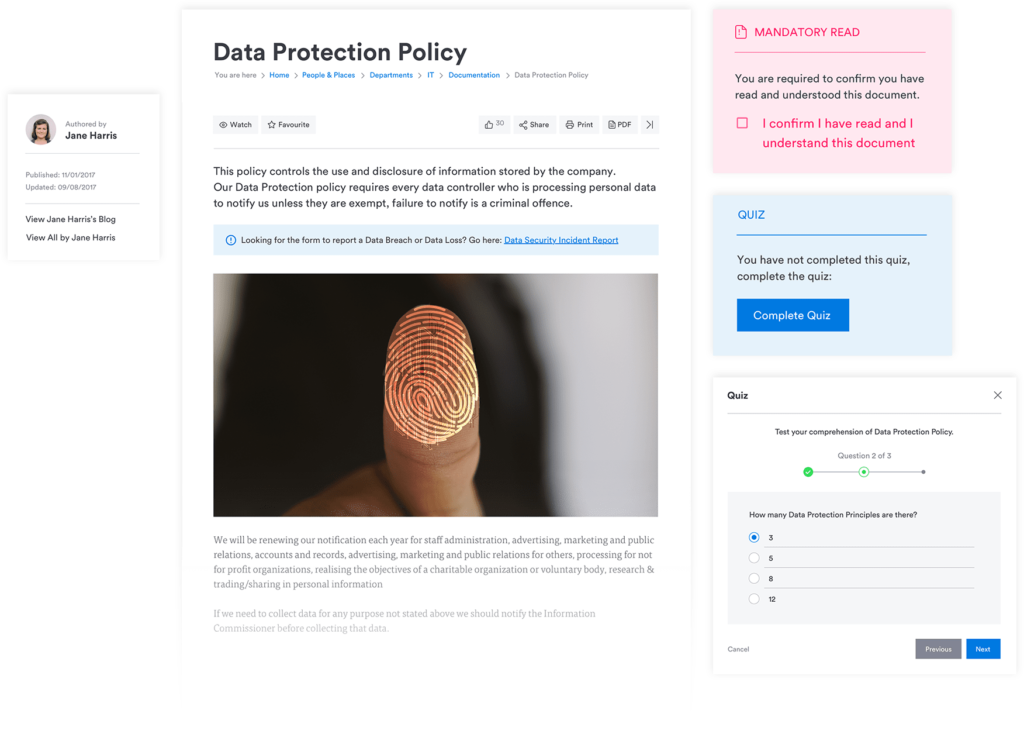
Send a ‘Welcome to the team’ pack. It’s a small gesture, but it will help get your employee excited about the role. A care package of company-branded goodies such as pens, a notebook or a mug is a good starting point. If you’re not into material goodies, why not consider a voucher for a free coffee or a one-off lunch delivery for day one?
Order necessary equipment or tools required, such as:
- Laptop / PC
- Screen
- Cellphone
- Printer
Set up necessary accounts for key IT systems, such as:
- Company email
- CRM
- Cloud storage systems
- Office365
- HR or payroll systems
If equipment is coming from you before going to the employee, download and install necessary applications ahead of the day.

If equipment is going directly to the employee, create step-by-step instructions, or ideally, set up a virtual induction meeting with a member of your IT team to go through this process. Services such as ‘LogMeIn’ allow your internal teams to remotely gain access and place essential tools, applications and necessary permissions on the employee’s hardware.
Consider what additional tools or applications a remote worker may need, that you don’t currently use for in-house staff. Mobile versions of particular tools, such as a mobile intranet app, may be key for workers who are out on the road.
To ease the burden of remembering multiple logins and passwords, consider password synchronization or configuring your company intranet as an identity provider: allowing employees to log in once to gain access to all their business-critical tools.
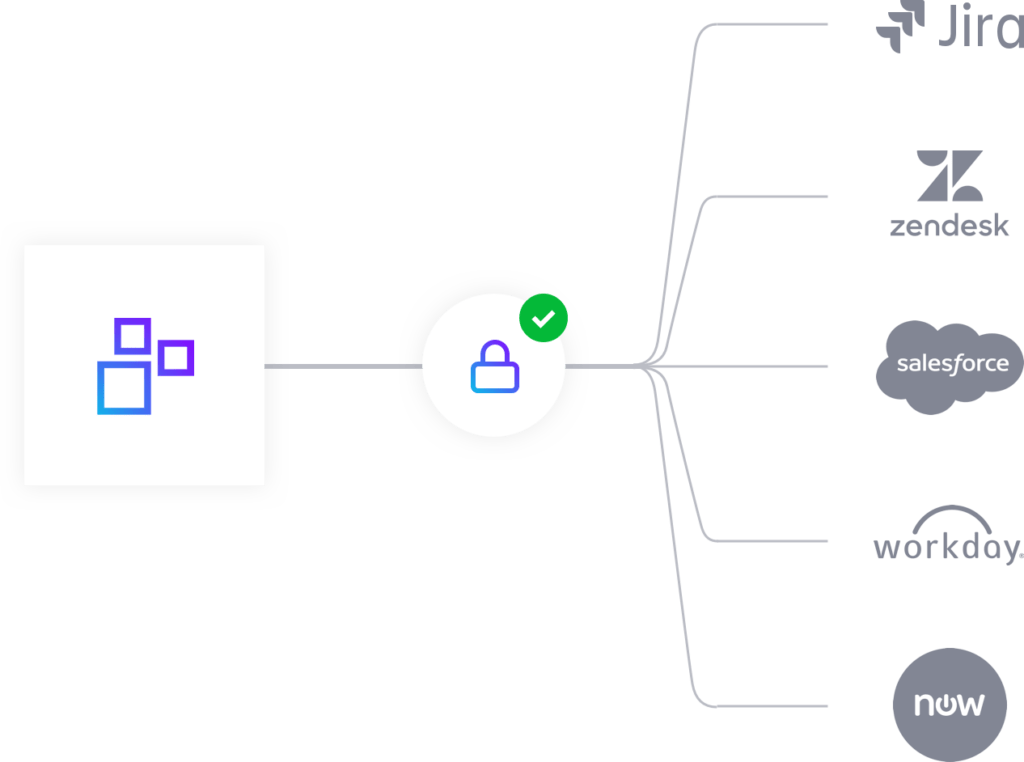
Discuss with the new recruit their individual requirements and ability to meet demands of role description. This may include:
Determining their WiFi needs. Do they have sufficient connection reliability and speed to perform their role? Will they require VPN access to ensure a secure connection to certain applications or business data?
Do they have a dedicated workspace at home or will they be hot-desking, looking for a flexible shared office, or simply going to a nearby coffee shop? Identify if they need support finding and setting up an appropriate workspace, and any equipment requirements – an additional monitor, for example, or a suitable desk, filing system or a webcam.

What role-specific tools, platforms, and systems do they need access to? Ensure necessary accounts, permissions and applications are arranged ahead of time, for ease of onboarding.
Finally, book and add induction sessions to diaries for those charged with delivering these to your new starter – more on these sessions in the next section.
Onboarding new staff remotely
Step #4 The First Day

In any given role or business, the first day can often be an overwhelming experience.
For the remote employee, this sensation is amplified. Without face-to-face engagement or the ‘physical’ aspect of onboarding that office employees benefit from, remote employees are subject to information overload: wrestling with realms of documents or virtual meetings.
The key to success on day one is to be mindful of this, and strive to balance out the day. If you’re able to bring your employee in-house for the first day or week of employment, great. If that’s not a possibility, adapt with the following ideas.
Office tour: regardless of whether your employee will work in or even visit your headquarters or office, your physical space still offers an insight into your culture and personality as an organization. It is also a source of intrigue for any newbie.
If you can, give your remote employee a virtual tour. Whether you walk around with a smartphone on a Skype video call or have a dedicated video, it doesn’t matter. Give them an idea of layout, where people sit and where key processes within your business occur. This brings your organization to life for them.
(This great tour of Cube’s Edelman office not only gives a visual insight into the work environment, but some great indications of the overall culture and ethos of the business.)
Set up essential systems, accounts, and communications platforms with IT support, if not already done – for example getting email and Office accounts up and running, providing complete access to cloud storage and intranet software, or setting up an instant messaging / Skype account. This time should also be used to give a top-level overview of security best practices for IT and systems.
Introduce them to their team: whether there are team members working within the office or based remotely elsewhere, strive to set up a video call team meeting to introduce everyone. Get each individual to give an overview of what they do, and how they’ll be working with your new starter.
Where possible, add some informal elements – whether it’s positioned as ‘virtual coffee with the team’, or perhaps asking people to share a few facts about themselves. This helps build those all-important connections between individuals.

Provide your new starter with an organization chart and talk through the key members of management, alongside any reporting structures and direct reports. Give them guidance on who to go to for specific issues.
Give your new starter a dedicated sponsor or mentor. No matter how comprehensive your company intranet or onboarding process is, they’re still likely to have questions; they may also simply need an informal sounding board to check in with during the early days or weeks of employment.
Arrange a one-on-one meeting with the manager or supervisor to set out initial tasks, discuss the role in more detail and set out expectations and responsibilities.
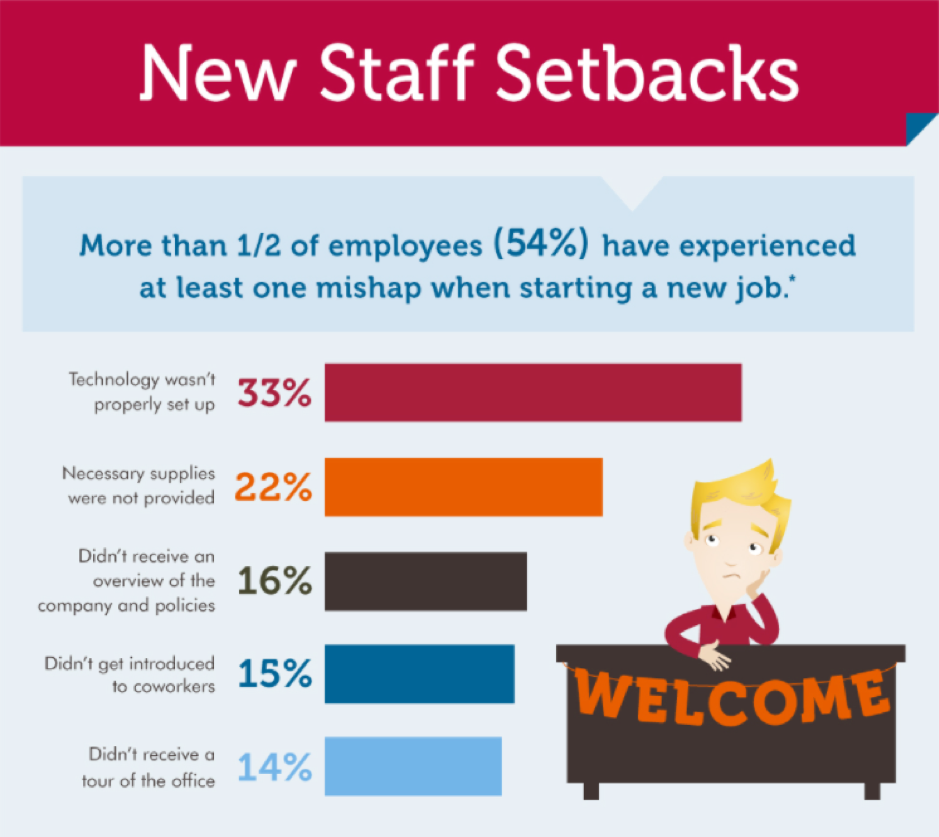
Onboarding new staff remotely
Step #5 The first week(s)
The key theme to this first week getting your new recruit immersed in who you are, what you do, and what you stand for.
This is where we see the distinction made between orientating – that is, giving someone the ‘nuts and bolts’ to get ready for doing their job – and onboarding, which is a more comprehensive process, designed to give your new hire a solid understanding of their role and place within your business. For remote workers, this process is typically a matter of onboarding to the digital workplace.
During this period, look to:
Deliver induction sessions with key department representatives to give your new employee an introduction to the business, its mission and values, its major offering (for example, your product or service), and key differentiators, alongside administrative inductions to cover need-to-know business information.
For remote workers, these may need to take place ‘virtually’, using via an online meeting or screen share. Don’t underestimate the value of face-to-face delivery at this stage, particularly for this type of employee. Where possible, use video conferencing alongside screen sharing, to give your new starter the opportunity to ‘meet’ key figures in the organization.

For example, you may need to book sessions with:
- Management – to offer an initial overview of your organization, exploring its history and story, its key achievements and milestones, the company mission, vision and values, its objectives and growth plans, an introduction to the organizational structure or hierarchy, including a ‘who’s who?’ of key figures within the company
- HR – covering elements such as the company benefits package, absence policy, equal opportunities or discrimination policies, grievance and disciplinary procedures, health and safety or performance management.
- Finance – detailing payroll protocol, submitting of expenses or finance-based benefits, such as health care or 401K
- IT – vital for remote workers who expose themselves to potentially higher levels of risk on public networks, this session may cover information and data security, acceptable use policy, permitted software list, password policy and basic security practices, such as use of anti-virus software, safe email usage and where employees can store business information.
- Product / Services representative: to offer an overview of your product or service, its purpose or objectives, USPs and any future plans or developments
- Marketing: Providing an overview of the key differentiators of your business, its brand, competitors and market, your target audience or persona and the key messaging of your business
In some organizations, the logistics of orchestrating inductions with each different department can be a challenge. It may be worthwhile considering a series of videos or presentations as a back-up option. Ensure that throughout, you’re introducing your worker to any organizational lingo – acronyms, shorthand, nicknames or terminology – that you have.

Don’t stop teaching. Onboarding is a process, not an event: if there is a way to immerse your remote worker in your product or service, such as giving them your product to road test, this can be invaluable.
Set out success metrics, deliverables and key projects for completion during the first few months. Ensure you talk through the duties and particulars of the role in detail. Defined goals and clear guidance on how these will be assessed give your new starter focus and direction, while providing a benchmark to review performance at the end of the probationary period.
Plan check-in meetings with both line manager / supervisor, and HR or senior management. Conclude these with a formal probation review to assess performance to date, obtain feedback from your new starter, identify any challenges and set out future steps for the role and that individual’s development.
Check any training requirements and ensure these are addressed. For example, if your new starter needs additional support with processes or tools specific to your organization. Remember that these individuals will find it more difficult to learn ‘on the job’, without the face-to-face interactions we benefit from in the office.
Onboarding new staff remotely
The value of onboarding

It’s something we’ve explored time and again, and if you manage employees – whether as a line manager, or from a HR perspective – you’ll already be aware of the significant benefits of effective onboarding. However, it’s worthwhile revisiting those benefits.
Rolled out successfully, an onboarding program can:
- Reduce time to productivity for new employees
- Boost employee engagement and commitment to your business
- Increase employee retention, and deliver associated cost savings
- Significantly boost employee happiness and reduce work-based stress
- Improve job performance and enhance best practices such as collaborative working, innovation, and team work
- Improve the overall employee experience and impact employer brand, and ability to attract and retain future talent
Amongst the stats surrounding effective employee onboarding, we learn that they can increase employee performance by up to 11 percent, increase discretionary effort by more than 30 percent, and that employees are 58 percent more likely to be at the company three years later if they complete a structured process through a mix of human relationships and a digital onboarding solution.
Those are figures worth noticing.
